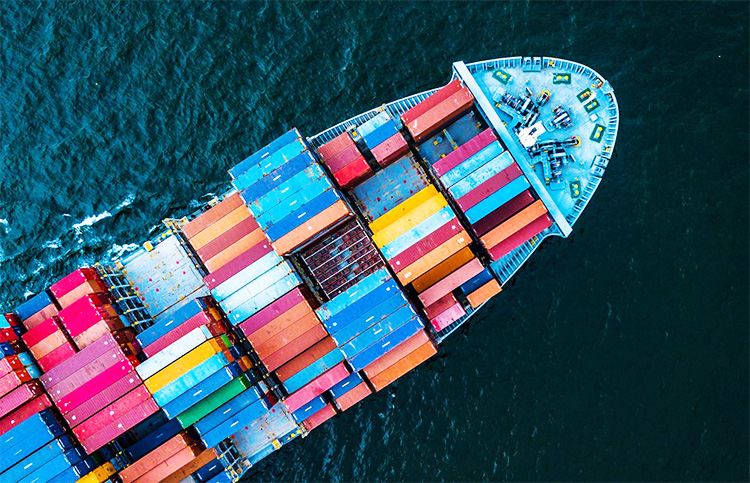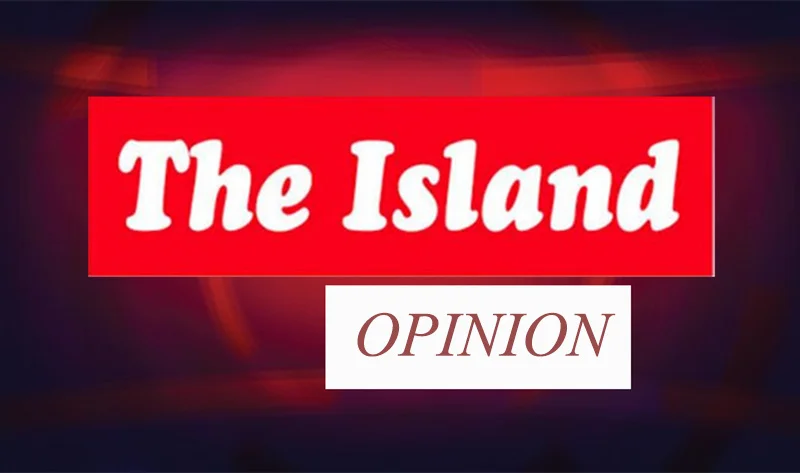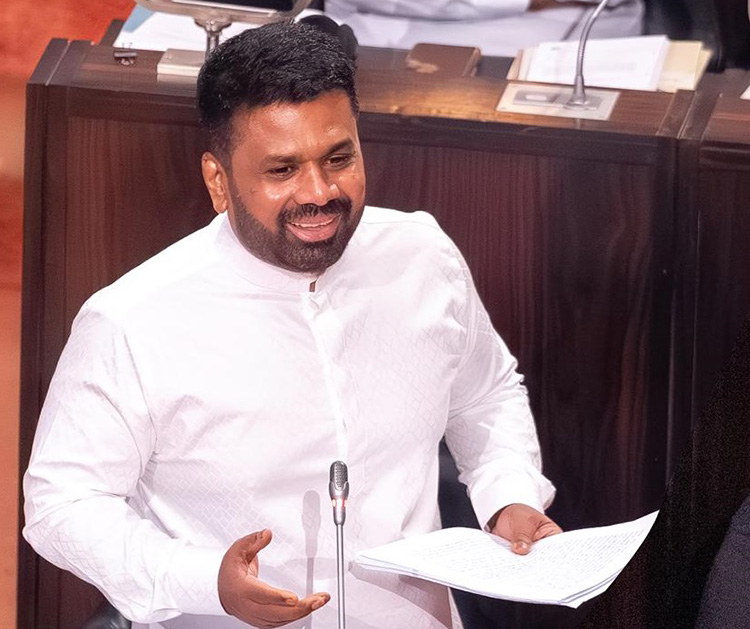Opinion
Pitfalls of export-led growth

By Prabhat Patnaik
After Sri Lanka and Pakistan, Bangladesh has become the third country in our neighbourhood to become afflicted by a serious economic crisis. It has asked for a $4.5 billion loan from the IMF, apart from $1 billion from the World Bank and $2.5-3 billion from multilateral agencies and donor nations. Though the government has put on a brave face, Bangladesh is facing a growing trade deficit, shrinking foreign exchange reserves, a rapidly depreciating currency, a record inflation and an energy crisis that has necessitated massive power cuts.
Ironically, Bangladesh was being hailed, just a few months ago, as a success story of “development”, and indeed, according to many development indicators, it had made remarkable progress. Female literacy had reportedly increased to 73 percent, infant mortality rate had become half that of Pakistan from which it had seceded in 1971, and its “Human Development Index” was higher than that of India, Pakistan and several other countries of the region. Many called it an “economic miracle” and not without some justification: a country that had been considered a “basket case” at independence, had pulled itself up quite remarkably to outperform all its neighbours, which is why the sudden emergence of economic difficulties for it has come as a big surprise to many.
As in the case of Sri Lanka, there is a tendency to blame “corruption” for the crisis; but, though corruption itself is reprehensible, this is an utterly facile explanation. More plausible is the view that the rise in international prices of a number of commodities, in the wake of the Ukraine War, has increased the import bill of Bangladesh to a point where it has simply run out of foreign exchange to pay for imports; for an import dependent country, this has created domestic shortages that have pushed up the inflation rate. And the shortage of foreign exchange, primarily dollars, also explains the depreciating exchange rate, despite the using up of foreign exchange reserves for stabilising it. The problem with this explanation, however, is that it focuses only on imports and makes no reference to Bangladesh’s reduced export earnings from garments that account for 83 percent of its total exports.
Some Bangladeshi economists have blamed the country’s monetary policy for the crisis: Bangladesh kept its interest rate unchanged for a long time instead of raising it. Had it done so, it would have been able to attract adequate private financial flows for financing its trade deficit; and in such a case the exchange rate would not have depreciated and remittances would not have dried up in expectation of such a depreciation. But this again is a superficial explanation; the problem lies much deeper, in the very nature of the strategy of export-led growth that Bangladesh, together with most other countries, has been following in the era of neo-liberalism.
The wisdom of pursuing a strategy of export-led growth has been discussed among development economists for at least half a century, ever since the so-called East Asian “miracle” started being contrasted with the comparatively sluggish growth experience of countries like India that were pursuing, in the World Bank’s language, an “inward looking” development strategy. This entire discussion, however, has missed an important element that plays a role in real life.
Among the various expenditures that constitute aggregate demand in an economy, some are autonomous while others are induced by the growth of aggregate demand itself. Exports and government expenditure are generally considered to be the two main autonomous items: consumption, for any given distribution of income, is supposed to be dependent on the level of income itself. There is no doubt an autonomous element in consumption too that is independent of income, but that becomes pronounced only in certain situations, for instance when goods hitherto unavailable to consumers suddenly become available.
The growth of demand and hence of output in an economy depends on the growth of the autonomous element of demand. And in a neo-liberal economy where being open to cross-border financial flows imposes limits on the fiscal deficit relative to GDP and also practical constraints on the government’s ability to tax the rich and stimulate demand without raising the fiscal deficit, exports become the main stimulus for growth. A neo-liberal economy in short is characterised by primary reliance upon export-led growth.
But the export-led growth strategy is not confined only to a neo-liberal setting. The government can deliberately encourage exports, rather than expanding the home market by enlarging its own expenditure, in which case we can have export-led rather than government expenditure-led growth, but with the government still being pivotal to growth; indeed, many argue that this was the case with East Asian countries.
We must distinguish between two cases among countries pursuing an export-led growth strategy: one where the countries earn systematically large current account surpluses and thereby build up their foreign exchange reserves, China being a prime example. In the case of such an economy, any adverse development in the world economic situation makes a difference only to the magnitude of the current account surplus, which affects the magnitude of accumulated foreign exchange reserves only marginally. The country therefore, can ride out such an adverse development without experiencing any crisis.
Many other countries, however, belong to the second category, where they run more or less perennial current account deficits, balance their payments through private financial inflows, and even when they build up foreign exchange reserves these are financed through borrowings, including from private financiers. India belongs to this category, as do the countries of South Asia in general, and indeed most countries of the global south.
In the case of this second group of countries, if there is a widening of the current account deficit because of some exogenous reason, whether a pandemic induced reduction in tourist earnings (as in the case of Sri Lanka), or a Ukraine War-induced increase in import prices, or a world recession-induced fall in export earnings (both of which have happened in the case of Bangladesh), its impact on the economy gets exaggerated because of the behaviour of private agents in general, and of private financiers in particular. This is because, when there is a widening of the current account deficit, and hence a greater need for private financial inflow, this very widening causes a greater financial outflow.
Private financiers expect the currency of the country that has seen a widening of its current deficit to depreciate, and hence, concerned exclusively with their own interest, take funds out of the country, thereby intensifying the foreign exchange problem for it. In fact, if things were left exclusively “to the market”, it is not clear that the country would ever reach an equilibrium in the foreign exchange market; but that is when the country approaches the IMF, and a loan from it creates expectations among private financiers that the depreciation of the exchange rate would be arrested, so that the foreign exchange market can come to some sort of an equilibrium. But the IMF demands a heavy price for giving a loan, in the form of a reduction in welfare spending, a winding down of the public distribution system, a handing over of the nation’s assets to foreigners (sometimes called “denationalisation” of assets) and so on.
It is this exaggeration of an initial shortfall in foreign exchange to a huge shortfall because of the behaviour of private finance, that occurs over an extremely brief period and pushes the country to the steely embrace of the IMF, which explains why countries suddenly go from being “miracles” to mendicants. The problem with export-led growth is precisely this: its apparent success can evaporate in a jiffy; and this happens when the pursuit of export-led growth makes the country dependent on the whims and caprices of globalised finance.
We have seen this happen in our neighbourhood, even to countries like Sri Lanka and Bangladesh which had notched up impressive human development achievements. With the world economy stagnating, and exports of several third world countries being hit by such stagnation, the list of mendicant countries is likely to grow in the coming days; and India despite its economic size and the large size of its foreign exchange reserves (though these are built up not from current account surpluses but from financial inflows) is by no means immune from it. The only saving grace in India’s case is its foodgrain self-sufficiency (though at very low levels of consumption) and external relations that would allow oil imports from countries “sanctioned” by imperialism. Even foodgrain self-sufficiency, however, would have disappeared if the Modi government’s three farm laws had been implemented; but the kisans saved the day for the country.
The idea of export-led growth had become discredited by the inter-war crisis of capitalism before it made a reappearance through neo-liberalism; with world capitalism confronting a new crisis, a change away from it is once again on the horizon.
(This article was originally published in the People’s Democracy)
https://www.networkideas.org/news-analysis/2023/06/pitfalls-of-export-led-growth/
Opinion
The policy of Sinhala Only and downgrading of English

In 1956 a Sri Lankan politician riding a great surge of populism, made a move that, at a stroke, disabled a functioning civil society operating in the English language medium in Sri Lanka. He had thrown the baby out with the bathwater.
It was done to huge, ecstatic public joy and applause at the time but in truth, this action had serious ramifications for the country, the effects have, no doubt, been endlessly mulled over ever since.
However, there is one effect/ aspect that cannot be easily dismissed – the use of legal English of an exact technical quality used for dispensing Jurisprudence (certainty and rational thought). These court certified decisions engendered confidence in law, investment and business not only here but most importantly, among the international business community.
Well qualified, rational men, Judges, thought rationally and impartially through all the aspects of a case in Law brought before them. They were expert in the use of this specialised English, with all its meanings and technicalities – but now, a type of concise English hardly understandable to the casual layman who may casually look through some court proceedings of yesteryear.
They made clear and precise rulings on matters of Sri Lankan Law. These were guiding principles for administrative practice. This body of case law knowledge has been built up over the years before Independence. This was in fact, something extremely valuable for business and everyday life. It brought confidence and trust – essential for conducting business.
English had been developed into a precise tool for analysing and understanding a problem, a matter, or a transaction. Words can have specific meanings, they were not, merely, the play- thing of those producing “fake news”. English words as used at that time, had meaning – they carried weight and meaning – the weight of the law!
Now many progressive countries around the world are embracing English for good economic and cultural reasons, but in complete contrast little Sri Lanka has gone into reverse!
A minority of the Sinhalese population, (the educated ones!) could immediately see at the time the problems that could arise by this move to down-grade English including its high-quality legal determinations. Unfortunately, seemingly, with the downgrading of English came a downgrading of the quality of inter- personal transactions.
A second failure was the failure to improve the “have nots” of the villagers by education. Knowledge and information can be considered a universal right. Leonard Woolf’s book “A village in the Jungle” makes use of this difference in education to prove a point. It makes infinitely good politics to reduce this education gap by education policies that rectify this important disadvantage normal people of Sri Lanka have.
But the yearning of educators to upgrade the education system as a whole, still remains a distant goal. Advanced English spoken language is encouraged individually but not at a state level. It has become an orphaned child. It is the elites that can read the standard classics such as Treasure Island or Sherlock Holmes and enjoy them.
But, perhaps now, with the country in the doldrums, more people will come to reflect on these failures of foresight and policy implementation. Isn’t the doldrums all the proof you need?
by Priyantha Hettige
Opinion
GOODBYE, DEAR SIR

It is with deep gratitude and profound sorrow that we remember Mr. K. L. F. Wijedasa, remarkable athletics coach whose influence reached far beyond the track. He passed away on November 4, exactly six months after his 93rd birthday, having led an exemplary and disciplined life that enabled him to enjoy such a long and meaningful innings. To those he trained, he was not only a masterful coach but a mentor, a friend, a steady father figure, and an enduring source of inspiration. His wisdom, kindness, and unwavering belief in every young athlete shaped countless lives, leaving a legacy that will continue to echo in the hearts of all who were fortunate enough to be guided by him.
I was privileged to be one of the many athletes who trained under his watchful eye from the time Mr. Wijedasa began his close association with Royal College in 1974. He was largely responsible for the golden era of athletics at Royal College from 1973 to 1980. In all but one of those years, Royal swept the board at all the leading Track & Field Championships — from the Senior and Junior Tarbat Shields to the Daily News Trophy Relay Carnival. Not only did the school dominate competitions, but it also produced star-class athletes such as sprinter Royce Koelmeyer; sprint and long & triple jump champions Godfrey Fernando and Ravi Waidyalankara; high jumper and pole vaulter Cletus Dep; Olympic 400m runner Chrisantha Ferdinando; sprinters Roshan Fernando and the Indraratne twins, Asela and Athula; and record-breaking high jumper Dr. Dharshana Wijegunasinghe, to name just a few.
Royal had won the Senior & Junior Tarbats as well as the Relay Carnival in 1973 by a whisker and was looking for a top-class coach to mould an exceptionally talented group of athletes for 1974 and beyond. This was when Mr. Wijedasa entered the scene, beginning a lifelong relationship with the athletes of Royal College from 1974 to 1987. He received excellent support from the then Principal, late Mr. L. D. H. Pieris; Vice Principal, late Mr. E. C. Gunesekera; and Masters-in-Charge Mr. Dharmasena, Mr. M. D. R. Senanayake, and Mr. V. A. B. Samarakone, with whom he maintained a strong and respectful rapport throughout his tenure.
An old boy of several schools — beginning at Kandegoda Sinhala Mixed School in his hometown, moving on to Dharmasoka Vidyalaya, Ambalangoda, Moratu Vidyalaya, and finally Ananda College — he excelled in both sports and studies. He later graduated in Geography, from the University of Peradeniya. During his undergraduate days, he distinguished himself as a sprinter, establishing a new National Record in the 100 metres in 1955. Beyond academics and sports, Mr. Wijedasa also demonstrated remarkable talent in drama.
Though proudly an Anandian, he became equally a Royalist through his deep association with Royal’s athletics from the 1970s. So strong was this bond that he eventually admitted his only son, Duminda, to Royal College. The hallmark of Mr. Wijedasa was his tireless dedication and immense patience as a mentor. Endurance and power training were among his strengths —disciplines that stood many of us in good stead long after we left school.
More than champions on the track, it is the individuals we became in later life that bear true testimony to his loving guidance. Such was his simplicity and warmth that we could visit him and his beloved wife, Ransiri, without appointment. Even long after our school days, we remained in close touch. Those living overseas never failed to visit him whenever they returned to Sri Lanka. These visits were filled with fond reminiscences of our sporting days, discussions on world affairs, and joyful moments of singing old Sinhala songs that he treasured.
It was only fitting, therefore, that on his last birthday on May 4 this year, the Old Royalists’ Athletic Club (ORAC) honoured him with a biography highlighting his immense contribution to athletics at Royal. I was deeply privileged to co-author this book together with Asoka Rodrigo, another old boy of the school.
Royal, however, was not the first school he coached. After joining the tutorial staff of his alma mater following graduation, he naturally coached Ananda College before moving on to Holy Family Convent, Bambalapitiya — where he first met the “love of his life,” Ransiri, a gifted and versatile sportswoman. She was not only a national champion in athletics but also a top netballer and basketball player in the 1960s. After his long and illustrious stint at Royal College, he went on to coach at schools such as Visakha Vidyalaya and Belvoir International.
The school arena was not his only forte. Mr. Wijedasa also produced several top national athletes, including D. K. Podimahattaya, Vijitha Wijesekera, Lionel Karunasena, Ransiri Serasinghe, Kosala Sahabandu, Gregory de Silva, Sunil Gunawardena, Prasad Perera, K. G. Badra, Surangani de Silva, Nandika de Silva, Chrisantha Ferdinando, Tamara Padmini, and Anula Costa. Apart from coaching, he was an efficient administrator as Director of Physical Education at the University of Colombo and held several senior positions in national sporting bodies. He served as President of the Amateur Athletic Association of Sri Lanka in 1994 and was also a founder and later President of the Ceylonese Track & Field Club. He served with distinction as a national selector, starter, judge, and highly qualified timekeeper.
The crowning joy of his life was seeing his legacy continue through his children and grandchildren. His son, Duminda, was a prominent athlete at Royal and later a National Squash player in the 1990s. In his later years, Mr. Wijedasa took great pride in seeing his granddaughter, Tejani, become a reputed throwing champion at Bishop’s College, where she currently serves as Games Captain. Her younger brother, too, is a promising athlete.
He is survived by his beloved wife, Ransiri, with whom he shared 57 years of a happy and devoted marriage, and by their two children, Duminda and Puranya. Duminda, married to Debbie, resides in Brisbane, Australia, with their two daughters, Deandra and Tennille. Puranya, married to Ruvindu, is blessed with three children — Madhuke, Tejani, and Dharishta.
Though he has left this world, the values he instilled, the lives he shaped, and the spirit he ignited on countless tracks and fields will live on forever — etched in the hearts of generations who were privileged to call him Sir (Coach).
NIRAJ DE MEL, Athletics Captain of Royal College 1976
Deputy Chairman, Old Royalists’ Athletics Club (ORAC)
Opinion
Why Sri Lanka needs a National Budget Performance and Evaluation Office

Sri Lanka is now grappling with the aftermath of the one of the gravest natural disasters in recent memory, as Cyclone Ditwah and the associated weather system continue to bring relentless rain, flash floods, and landslides across the country.
In view of the severe disaster situation, Speaker Jagath Wickramaratne had to amend the schedule for the Committee Stage debates on Budget 2026, which was subsequently passed by Parliament. There have been various interpretations of Budget 2026 by economists, the business community, academics, and civil society. Some analyses draw on economic expertise, others reflect social understanding, while certain groups read the budget through political ideology. But with the country now trying to manage a humanitarian and economic emergency, it is clear that fragmented interpretations will not suffice. This is a moment when Sri Lanka needs a unified, responsible, and collective “national reading” of the budget—one that rises above personal or political positions and focuses on safeguarding citizens, restoring stability, and guiding the nation toward recovery.
Budget 2026 is unique for several reasons. To understand it properly, we must “read” it through the lens of Sri Lanka’s current economic realities as well as the fiscal consolidation pathway outlined under the International Monetary Fund programme. Some argue that this Budget reflects a liberal policy orientation, citing several key allocations that support this view: strong investment in human capital, an infrastructure-led growth strategy, targeted support for private enterprise and MSMEs, and an emphasis on fiscal discipline and transparency.
Anyway, it can be argued that it is still too early to categorise the 2026 budget as a fully liberal budget approach, especially when considering the structural realities that continue to shape Sri Lanka’s economy. Still some sectors in Sri Lanka restricted private-sector space, with state dominance. And also, we can witness a weak performance-based management system with no strong KPI-linked monitoring or institutional performance cells. Moreover, the country still maintains a broad subsidy orientation, where extensive welfare transfers may constrain productivity unless they shift toward targeted and time-bound mechanisms. Even though we can see improved tax administration in the recent past, there is a need to have proper tax rationalisation, requiring significant simplification to become broad-based and globally competitive. These factors collectively indicate that, despite certain reform signals, it may be premature to label Budget 2026 as fully liberal in nature.
Overall, Sri Lanka needs to have proper monitoring mechanisms for the budget. Even if it is a liberal type, development, or any type of budget, we need to see how we can have a budget monitoring system.
Establishing a National Budget Performance and Evaluation Office
Whatever the budgets presented during the last seven decades, the implementation of budget proposals can always be mostly considered as around 30-50 %. Sri Lanka needs to have proper budget monitoring mechanisms. This is not only important for the budget but also for all other activities in Sri Lanka. Most of the countries in the world have this, and we can learn many best practices from them.
Establishing a National Budget Performance and Evaluation Office is essential for strengthening Sri Lanka’s fiscal governance and ensuring that public spending delivers measurable value. Such an office would provide an independent, data-driven mechanism to track budget implementation, monitor programme outcomes, and evaluate whether ministries achieve their intended results. Drawing from global best practices—including India’s PFMS-enabled monitoring and OECD programme-based budgeting frameworks—the office would develop clear KPIs, performance scorecards, and annual evaluation reports linked to national priorities. By integrating financial data, output metrics, and policy outcomes, this institution would enable evidence-based decision-making, improve budget credibility, reduce wastage, and foster greater transparency and accountability across the public sector. Ultimately, this would help shift Sri Lanka’s budgeting process from input-focused allocations toward performance-oriented results.
There is an urgent need for a paradigm shift in Sri Lanka’s economy, where export diversification, strengthened governance, and institutional efficiency become essential pillars of reform. Establishing a National Budget Performance and Evaluation Office is a critical step that can help the country address many long-standing challenges related to governance, fiscal discipline, and evidence-based decision-making. Such an institution would create the mechanisms required for transparency, accountability, and performance-focused budgeting. Ultimately, for Sri Lanka to gain greater global recognition and move toward a more stable, credible economic future, every stakeholder must be equipped with the right knowledge, tools, and systems that support disciplined financial management and a respected national identity.
by Prof. Nalin Abeysekera ✍️
-

 Features5 days ago
Features5 days agoFinally, Mahinda Yapa sets the record straight
-

 News7 days ago
News7 days agoOver 35,000 drug offenders nabbed in 36 days
-

 News6 days ago
News6 days agoCyclone Ditwah leaves Sri Lanka’s biodiversity in ruins: Top scientist warns of unseen ecological disaster
-

 News7 days ago
News7 days agoRising water level in Malwathu Oya triggers alert in Thanthirimale
-

 Features5 days ago
Features5 days agoHandunnetti and Colonial Shackles of English in Sri Lanka
-

 Business3 days ago
Business3 days agoCabinet approves establishment of two 50 MW wind power stations in Mullikulum, Mannar region
-

 Business7 days ago
Business7 days agoSri Lanka betting its tourism future on cold, hard numbers
-

 News6 days ago
News6 days agoJetstar to launch Australia’s only low-cost direct flights to Sri Lanka, with fares from just $315^



















